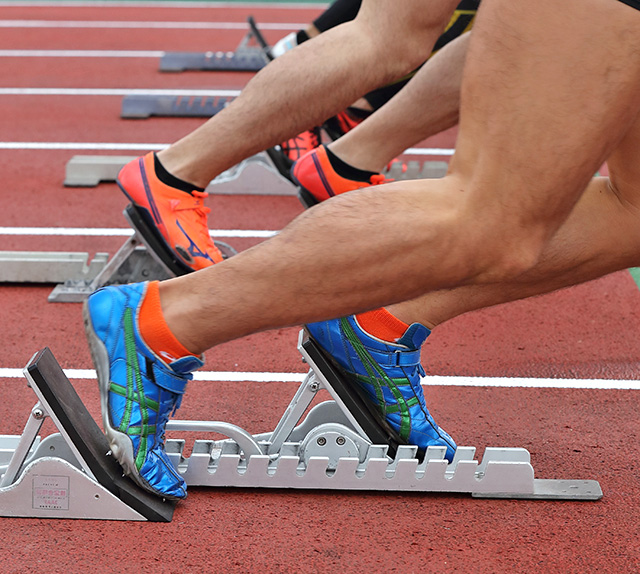Whether it's running, jumping, throwing, balancing, or striking, reaction forces are intrinsic to nearly every athletic movement. Understanding and leveraging reaction forces is fundamental to achieving optimal performance and preventing injuries in sports.
According to Newton's Third Law of Motion, for every action, there is an equal and opposite reaction. In the context of sports biomechanics, this principle elucidates how an athlete's actions generate forces that are reciprocated by the environment.
 an athlete exerts force against the ground
an athlete exerts force against the groundSporting Examples
During movements like running or jumping, an athlete exerts force against the ground (action force). Simultaneously, the ground exerts an equal and opposite force in response (reaction force). This interaction is crucial for propelling the athlete forward or upward.
In track and field, the sprinter pushes off the starting blocks to accelerate down the track, they exert a force against the ground in the backward direction. In response to the sprinter's push, the ground exerts an equal and opposite force in the forward direction, propelling the sprinter forward.
A basketball jump shot ilustrates reactin forces in action. During a jump shot, a player exerts force on the ground by pushing off with their legs. The ground exerts an equal and opposite reaction force, lifting the player into the air. This reaction force is essential for achieving the necessary height and distance to take a successful jump shot.
Agility movements in soccer showcase the dynamic interplay of action and reaction forces. Whether it's evading an opponent or swiftly changing course to pursue the ball, soccer players leverage reaction forces to execute agile movements effectively. When a soccer player rapidly changes direction or performs a quick lateral movement on the field, they initiate the action by exerting force against the ground through their feet and legs. In response to the player's action, the ground exerts an equal and opposite reaction force. This reaction force not only stops the player's lateral movement but also propels them in the new intended direction.
Related Pages
- Sport-Specific Physics Examples
- Force — Newton's 2nd law is where Force equals mass times acceleration.
- More physics of sport
- Books on Sports Biomechanics


 Current Events
Current Events